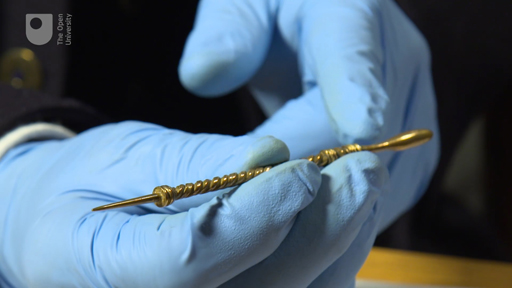2.3 Cataract surgery
Treatment for eye diseases in the ancient world went far beyond ointments. In particular, cataract surgery was carried out. It is described by Celsus (On Medicine, 7.13–15), who says it was a delicate procedure.
The patient would sit opposite the doctor and the patient’s head would be held by the doctor’s assistant. As is also the case today, the good eye was covered, so the patient would not have full vision of the procedure. Celsus warns his readers that any movement could cause the doctor to slip and thus cause damage to the eye. A thin needle was stuck into the eye and cataract, and the cataract was slowly and carefully moved below the pupil. If the cataract did not stay below the pupil, Celsus suggested that it be cut up by the needle into smaller parts and each part could then be moved below the pupil. This would help restore vision.
In this video, Ralph Jackson of the British Museum shows Dr Patty Baker of the University of Kent the instruments used by the Romans for eye surgery, and demonstrates how cataract operations would have been carried out.

